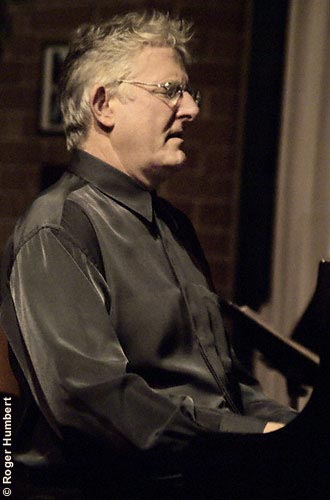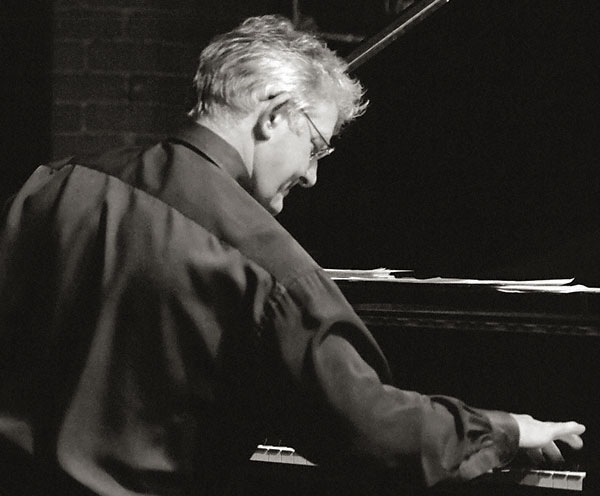|
|
|
Bill Mays Trio
|
| November 23 – 27, 2004 • Montréal Bistro • Toronto |
|
|

Bill Mays |
Bill Mays is a huge somebody–pianist, composer, arranger, and if you Google him, as I did, you’ll learn a lot about his musical influences such as Earl ’Fatha’ Hines, Bill Evans, Horace Silver, Prokofiev, Chopin and Dvorak. He spends six months of the year working around the world. Some of that time is spent in Toronto with his chamber jazz septet, recent single dates at the Downtown Jazz Festival and the ROM.
This time, to get with his local trio, consisting of Neil Swainson on bass and Terry Clarke on drums, Mr. Mays struggled out of the grasp of Canadian Immigration at the airport, and arrived at the Bistro for a weeklong celebration of a new CD entitled Bick’s Bag in honour of Bill’s former partner, the retired guitarist Ed Bickert.
They opened the show with Rodgers and Harts’ “Isn’t it Romantic” written for the show Love Me Tonight (1932). While Terry Clarke did some magical brushwork, Bill Mays came on with discordant chords, some stomping and some on tiptoe, which occasionally dissolved into the melody and after a few choruses to remind us the song may not be all that romantic, slowed down to a sweetly lyrical pace, supported by the regular boom of Swainson’s bass and Clarke’s beautifully placed accents.
|
|
The next number Bill chose was “Some of These Days,” written and recorded by "the last of the red hot mamas,” Sophie Tucker, in 1911, and carried into posterity during the early thirties by Bing Crosby and Cab Calloway. So what we are listening to is Mr. Mays’ participation in the currently popular Great American Songbook tradition. This version swung from the start and revealed, by the end, a very structured architecture of ascending chords, plenty of quotes to tunes such as “Heart and Soul” (Loesser and Charmichael, 1938), and backreferences to “Isn’t It Romantic.”
Like Count Basie, Bill Mays conducts from the keyboard, signaling breaks for his partners with a little riff, pushing gently with intermittent chords while Terry flutters his brushes or Swainson’s bass thrums along. You can see that Mays really listens, and doesn’t let himself anticipate what he’s going to do next, but leaves spaces to let the music come on its own, as if from another player.
|
|
|
The set continued with a bluesy rendition of Ann Ronel’s “Willow Weep for Me,” (1932), notable for Terry Clarke’s drumming which swings hard but is difficult to describe, except to say it floats around like it’s own thing yet totally at one with the music. The set ended with a nod to bebop, Coleman Hawkins’ “Bean and the Boys.” Mays ran a lot of sixteenth notes up and down the keyboard, like Hawk, keeping the melody at bay, while Terry and Neil demarcated the beatline.
The Montréal Bistro is one of the best places to hear jazz, partly because of the quiet policy during a set, partly because the audience has at least a semipro status, and because artists who play well, play well there.
|
|
|
|
Report by Stanley Fefferman • Photographs by Roger Humbert
|
|
|
|
|



